The temptation to renovate, modernize, upgrade is irresistible for engineers working in the automotive industry. Competition is fierce, fashions are increasingly ephemeral and the drive to innovate is permanent. But while this is good practice in most cases, there are some for which it can represent a death certificate. I'm talking about iconic models, those that have established themselves in the automotive world as references for something, almost always with roots in human history. The Jeep Wrangler is one of those cases, direct heir to the famous Willys who fought in World War II.
But what to do when it comes time to launch a new generation of a model that had its origins 77 years ago and has never abandoned the basic concept? Revolutionize and modernize?… Or just evolve?… Both hypotheses have their risks, it is necessary to decide which is the best path to success. And here the success is not even Wrangler's direct sales.
Jeep knows that its icon is much more important as a brand banner than as a business in itself. It is the intrinsic and genuine characteristics of the model that allow the brand to say that it is “the last manufacturer of true TT”. It is this image that marketing then uses to sell SUVs from the rest of the catalog, as it always did.
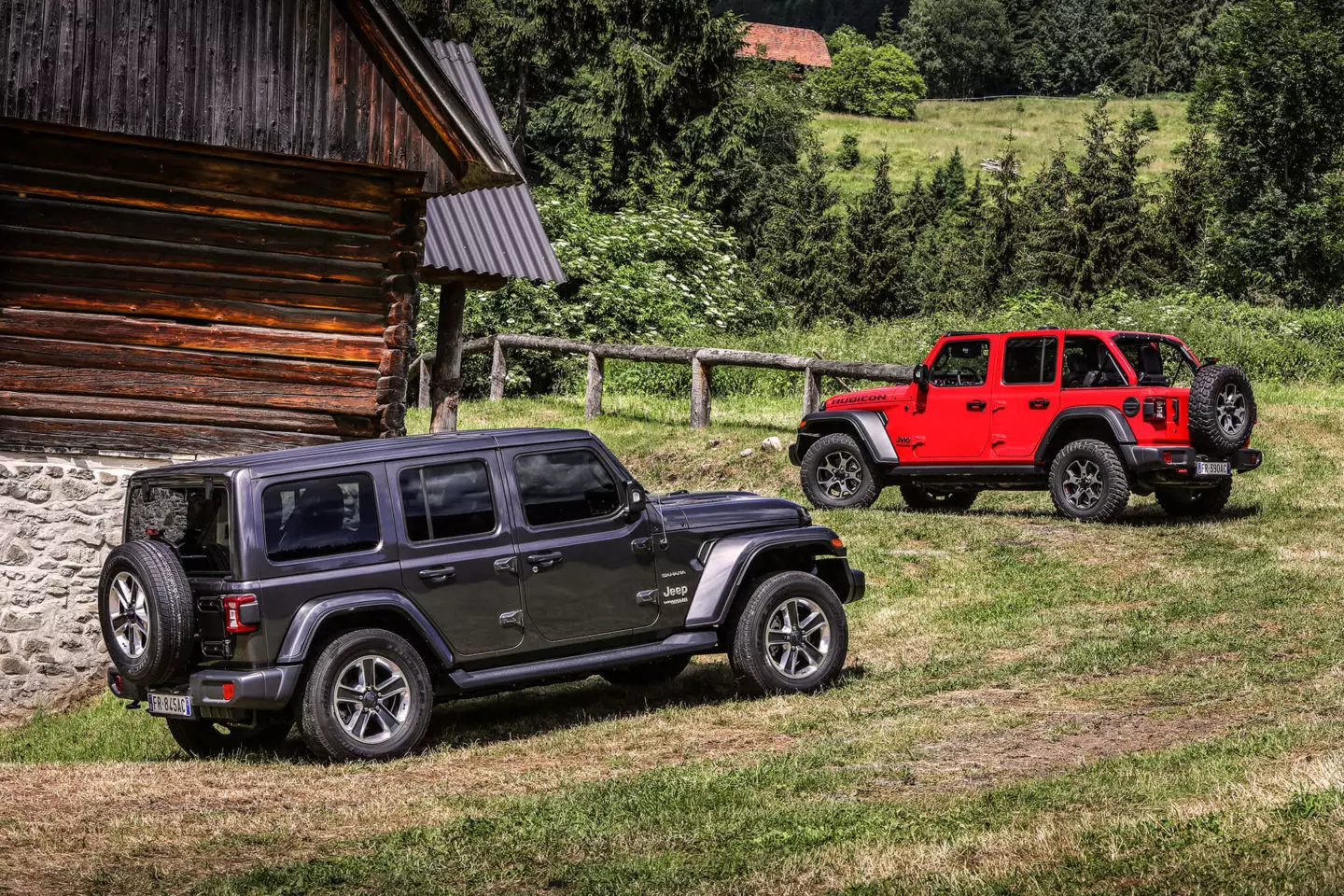
On the outside... little has changed
As a friend told me, "the first time I saw a Willys was in a movie about World War II, on television and it was the first time I felt like driving a 4×4." I share that feeling and I don't deny that it's always with some curiosity that I get behind the wheel of a new Wrangler, but the last time I had done it was more than ten years ago...
On the outside, the changes are subtle, with a slightly more inclined windshield, different taillights, mudguards with a different profile and headlights that once again “bite” the seven-inlet grille, as in the first CJ. There is still a short, two-door version and a long, four-door version; and canopies made of removable plastic or canvas panels, under which there is always a robust safety arch. The novelty is the option of a canvas roof with electrical control for the top.
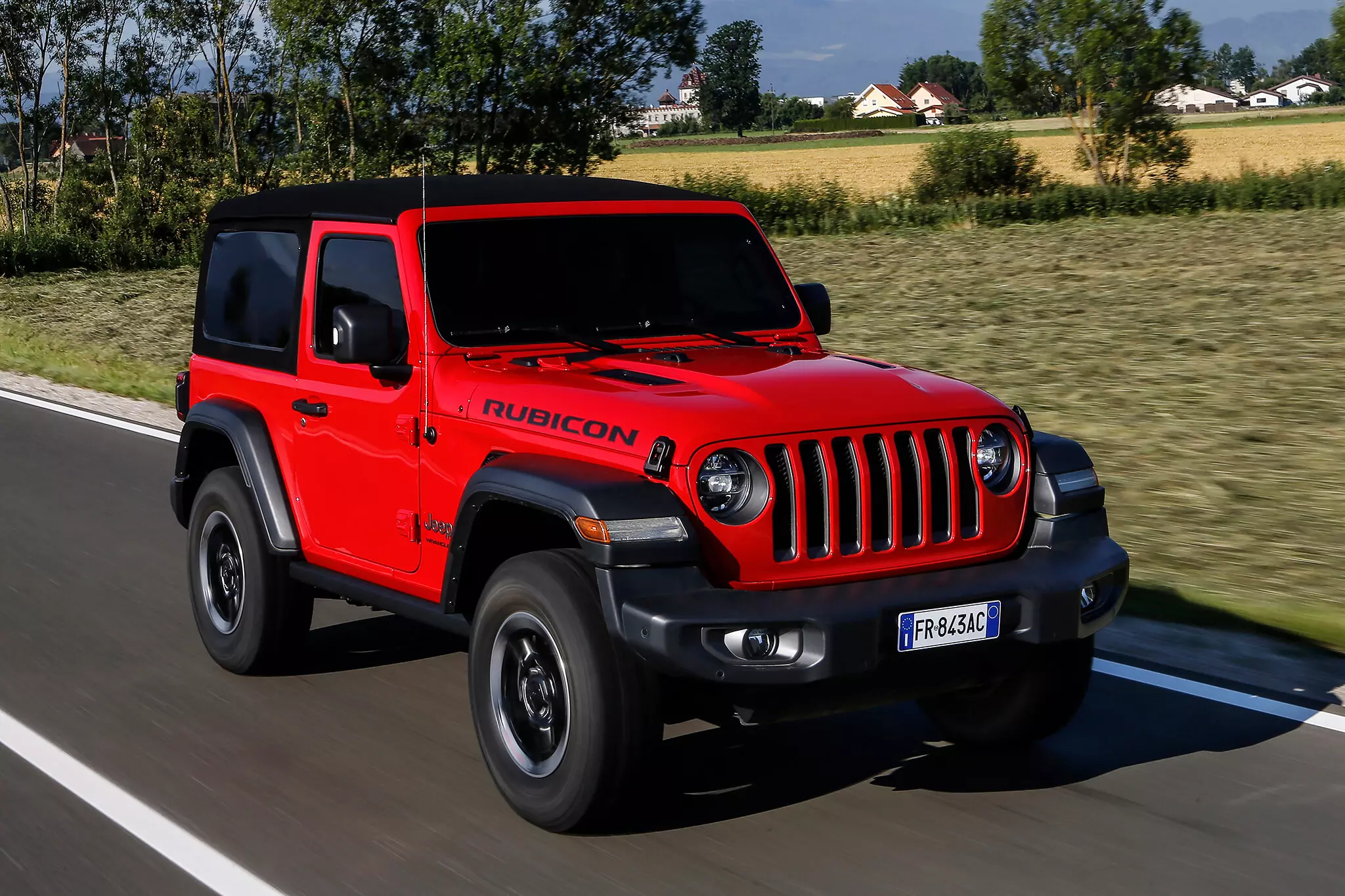
Inside… changed more
The cabin also evolved in terms of quality, design and personalization, which now includes the color of the dashboard and applications in imitation leather with contrasting stitching and everything. The Uconnect infotainment, known to the brand, is also now available and the seats have a new design, with greater support. There's a handle on the front pillar to help you climb into the seat and that's more handy than it looks as the driving position is higher than on many larger SUVs.
The relationship between the main controls and the driver is ergonomically correct, despite the fact that the steering wheel is large and the gearbox and transmission levers are huge. Visibility towards the front is excellent, towards the rear not really. In the two-door, the rear seats continue to be tight, but for the Portuguese buyer that doesn't matter, as the most sold version around here will be the commercial, with only two seats and a partition.
The four-door will also be available, homologated as a pick-up, with the two to pay class 2 at the tolls.
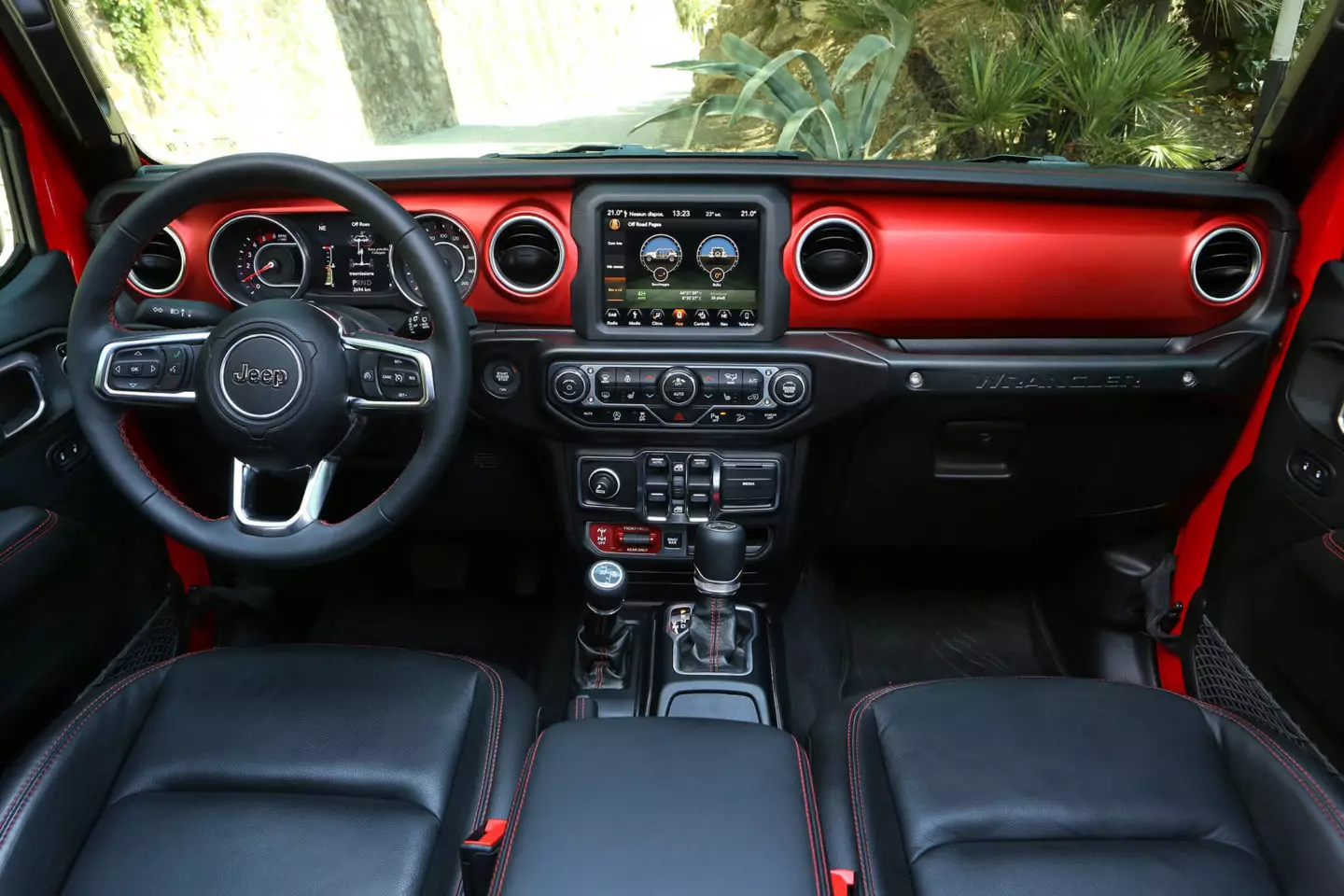
the range
The range has three equipment versions, Sport, Sahara (option for an Overland equipment package) and Rubicon, all with all-wheel drive and eight-speed automatic transmission, coupled to the 2143 cm3 Multijet II Diesel engine manufactured by VM and used in several FCA models, here with 200 hp and 450 Nm.Some perks have been added, such as driving aids: blind spot warning, rear traffic warning, parking aid and stability control with side roll mitigation. And there's a host of graphics, with real-time information about off-road driving conditions, hidden somewhere in the touchscreen menus.
in the sahara desert
I started by driving a Sahara, which is the more urban version, with Bidgestone Dueller tires and the simplest variant of the 4×4 transmission, the Command-Trac. This new transmission has the 2H/4HAuto/4HPart-Time/N/4L positions and can be changed from 2H (rear wheel drive) to 4H on the road, up to 72 km/h. The position 4HAuto it's new and continuously distributes torque between the two axles, according to the demands of the moment — perfect for tarmac on ice or snow.
In position 4HPart-Time , the distribution varies little, around 50% per axis. Both are only possible because the Wrangler, for the first time, has a center differential. As for the eight-speed automatic transmission, which is also used in other models in the group, it starts by being the first thing to please, due to the smoothness of the shifts, whether in “D” or through the fixed paddles on the steering wheel.
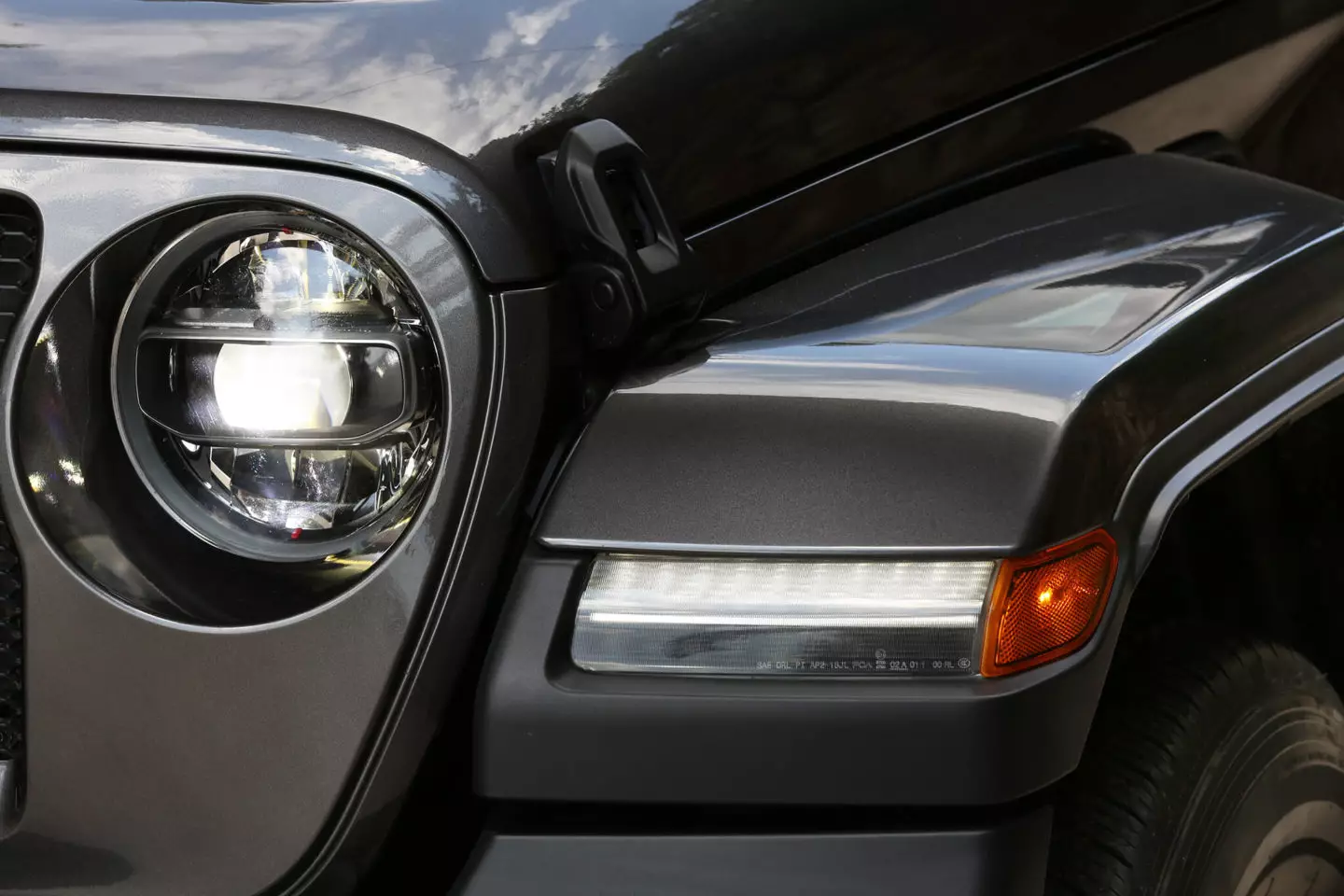
Jeep Wrangler Sahara
The structure of the Wrangler is completely new, in the sense that the parts are new and, to a greater extent, made of high-strength steel. The Wrangler is wider, although shorter to improve off-road angles which are 36.4/25.8/30.8 respectively for attack/ventral/departure. But Jeep has not changed the basic concept, which continues to use a chassis with spars and crossmembers with separate bodywork, with rigid axle suspension, now guided by five arms each and continuing with coil springs . To save weight, the bonnet, windshield frame and doors are all in aluminum.
As always, the roof can fold forward and the doors can be removed, for those who still enjoy playing Meccano.
And it is precisely the basic concept, which some will say outdated, that determines the first impressions of driving on a motorway. The typical swaying of the bodywork is still very present, although the suspension is not totally intolerant of the bad road surface. The noises of the air trying to slip into the canvas roof are traveling companions.
The engine, obviously with less sound insulation, shows that it is far from the benchmarks in terms of noise and has little appetite for higher regimes. The maximum speed is around 160 km/h, but that doesn't matter, as the 120 already gives the impression that it goes much faster, but to spend less than 7.0 l/100 km . The tires end up surprising because of the low rolling noise, but they don't help to avoid the inaccuracy of the steering, which still uses a ball recirculation system and is highly reduced.
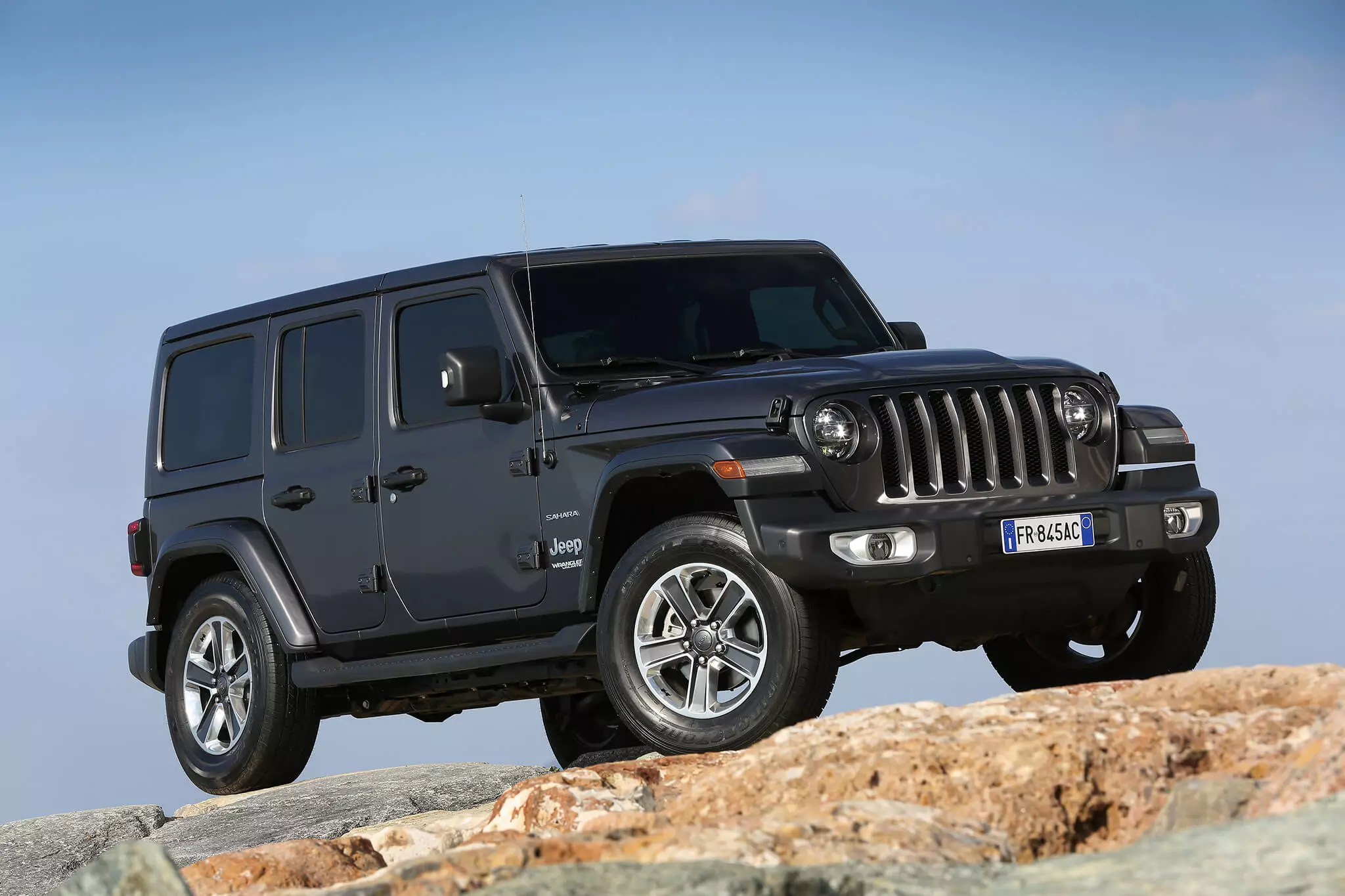
When the curves arrive, everything gets worse. The Wrangler tilts and the stability control immediately kicks in, nailing the car to the road to avoid any danger of a rollover, however small it may seem. The direction has almost no return, forcing you to "undo" quickly at intersections, so as not to end up with the front pointing to the opposite lane.
The desire is to actually slow down, look for the most touristic route, pull back the canvas roof and enjoy the landscape.
Rubicon, this one!
After several hours of driving the Sahara on the road and highway, it really felt like I was crossing… a desert, with asphalt. But the sight of a Rubicon standing in the middle of the camp the Jeep had set up in Spielberg, Austria, quickly changed the mood. This is the real Wrangler , with 255/75 R17 BF Goodrich Mud-Terrain tires and the more sophisticated Rock-Trac transmission, which has the same Selec-Trac transfer box but the shorter gear ratio (4.10:1 instead of 2.72:1 of the Sahara). It also has Tru-Lock, the electric locking of the rear or rear most front differentials, detachable front stabilizer bar. In the Sahara, there is only option for an auto-blocking at the back. The rigid axles are a Dana 44, much more robust than the Dana 30 of the Sahara.
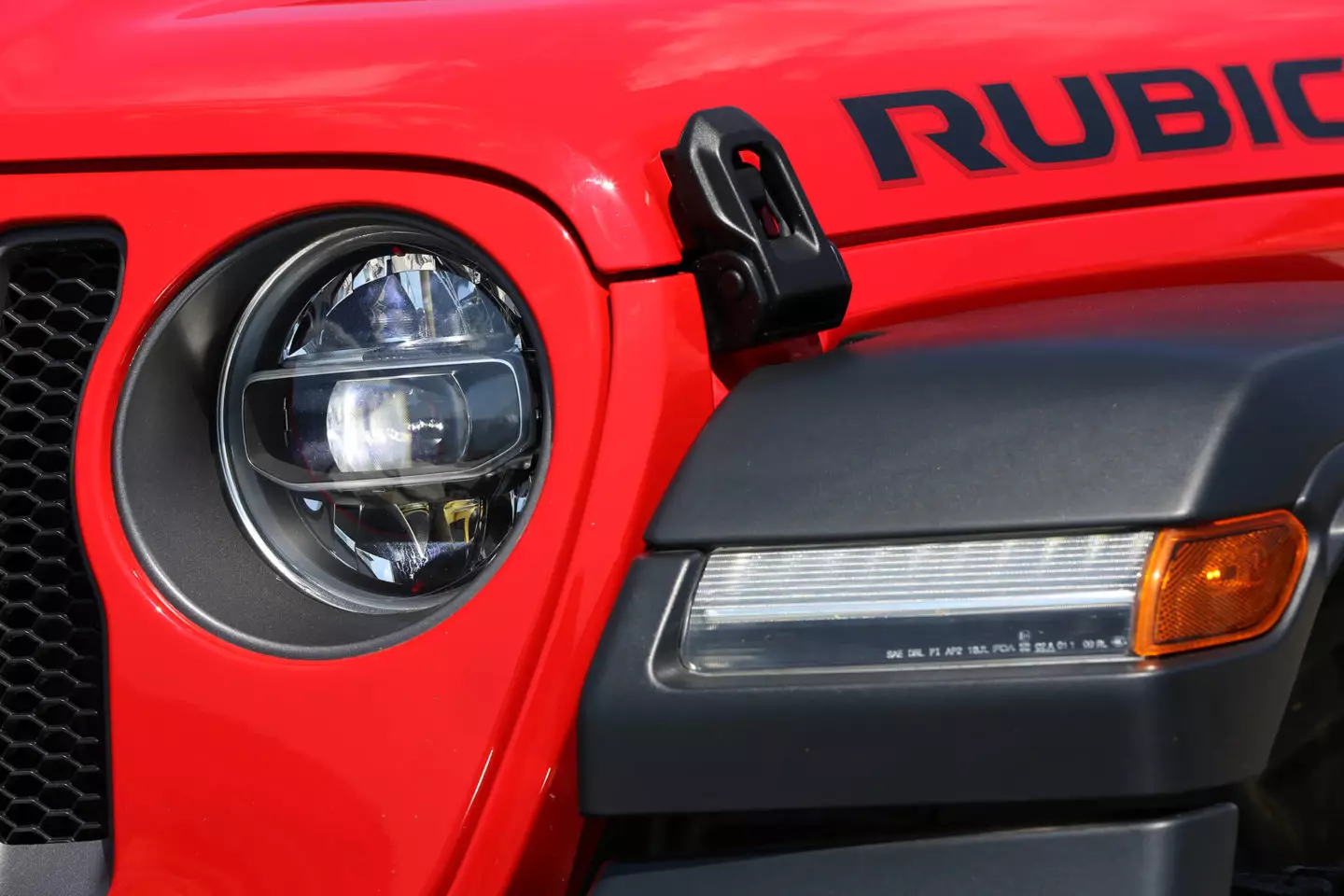
LED also in Rubicon
To test this entire arsenal, the Jeep prepared a route through the mountain that started immediately with a steep climb with a precipice on the driver's side and only as wide as the car, made of loose chipped boulders and sandy earth, crossed by deep ditches threatening the bottom of the Wrangler. The tires passed over the rocks with total indifference, the 252 mm height above the ground, only once let the bottom scrape on the ground and for the rest it was enough to engage 4L and accelerate smoothly, very smoothly. No loss of traction, no sudden steering reactions and an unexpected sense of comfort.
And everything looks easy
Then came another climb, even steeper and with tree roots threatening to complicate life for the tyres.
It was several tens of meters with the Wrangler being rattled as if it were attached to a giant pneumatic hammer.
Not that this was a difficult obstacle, but it was really destructive to the structure, which never complained. Up ahead, the Jeep men had dug alternate holes, to test the axle articulation, the height to turn off the front stabilizer bar and see how the wheels only lift off the ground when the axles are already beyond crossed. The next obstacle was a huge hole filled with water, to test the 760 mm ford passage , which the Wrangler passed without letting a drip into the cabin.
Up ahead, there was a muddy area, which ran through the middle of the wheels, the preferred terrain for differential locks. And like everything that goes up, it has to go down, there was no lack of an endless cliff, with a selection of varied floors and steep areas, to see that even hanging from the brakes, the Wrangler shows some kind of hesitation.
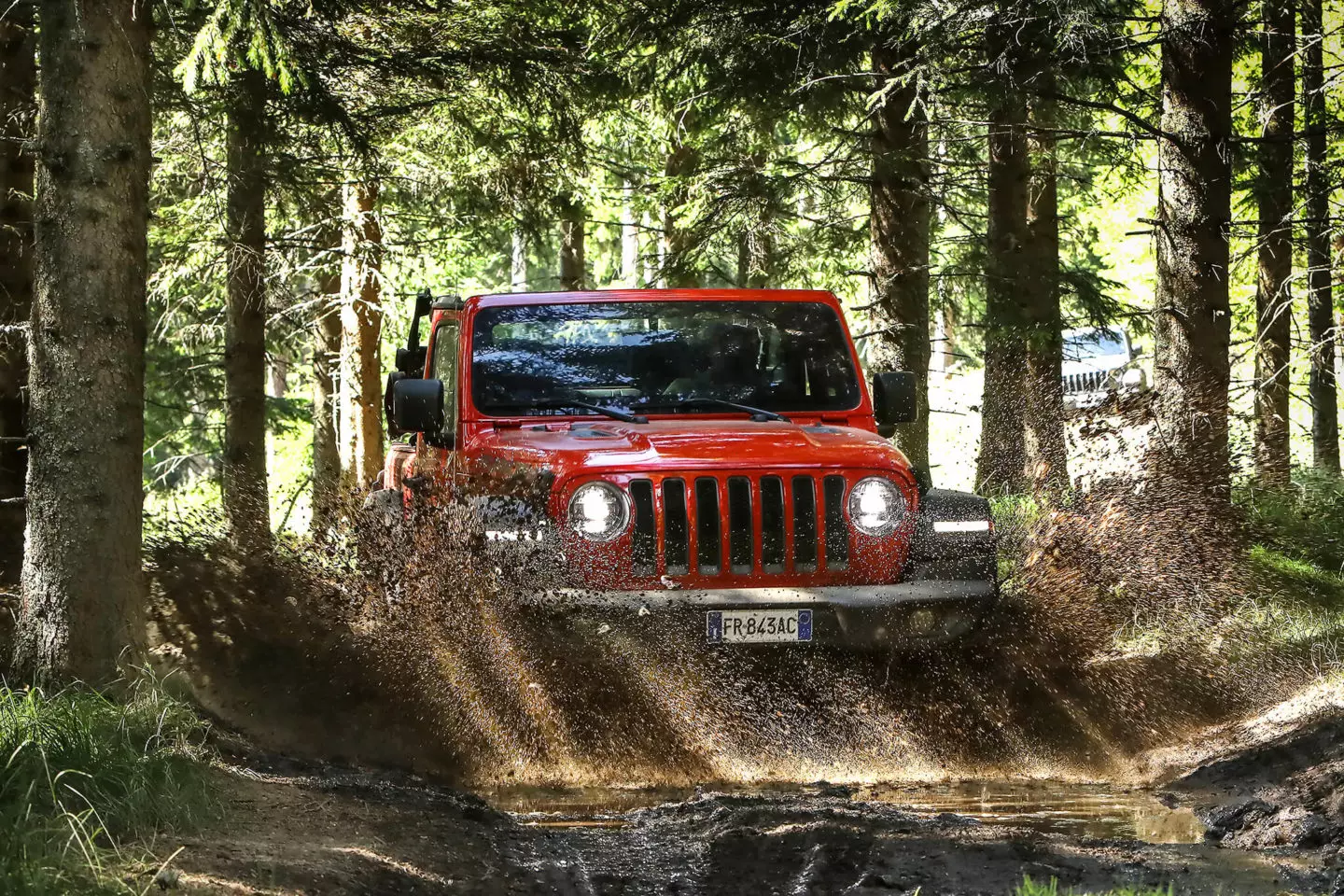
Conclusions
I can't say that it was the most difficult off-road route I've done so far, lacking the most trial obstacles, where you really can take the test of nine at any TT, but it was a route that would punish any off-road vehicle and that the Wrangler Rubicon made it look like a field trip. All with a feeling of enormous ease, transmitted by the traction system, the automatic transmission, the suspension and also the steering.
In other words, everything I criticized on the road and highway, I have to praise when driving off-road, to conclude that the Jeep Wrangler continues to be one of the most competent TT's. Jeep knew not to spoil its icon and the model's fanatics, all over the world, have reason to be happy. Unless they're bothered by the Plug-in hybrid version of the Wrangler that Jeep announced for 2020.
